The Netherlands, often referred to as Holland, is a captivating country located in Northwestern Europe. Renowned for its picturesque landscapes, vibrant cities, and rich cultural heritage, the Netherlands is a popular destination for travelers seeking a unique blend of history, art, and natural beauty. This blog will explore the Netherlands’ geography, provinces, history, culture, cuisine, economy, future perspectives, and must-visit destinations, providing a comprehensive overview of this remarkable country.
Table of Contents
Geography of the Netherlands
The Netherlands is bordered by Germany to the east, Belgium to the south, and the North Sea to the northwest. The country covers an area of approximately 41,543 square kilometers, with a significant portion of its land reclaimed from the sea through an extensive system of dikes and canals. The landscape is characterized by flat terrain, with around 27% of the country lying below sea level, making it one of the lowest-lying countries in the world.
The Dutch landscape features iconic windmills, tulip fields, and extensive canal systems. The IJsselmeer Lake, a large freshwater lake, and the Wadden Sea, a UNESCO World Heritage site, are notable geographical features. The country’s climate is maritime, with mild summers and cool winters, contributing to its lush greenery and vibrant flora.
Provinces of the Netherlands
| No | Name | Capital |
|---|---|---|
| 1 | North Holland | Haarlem |
| 2 | South Holland | The Hague |
| 3 | Utrecht | Utrecht |
| 4 | Gelderland | Arnhem |
| 5 | Overijssel | Zwolle |
| 6 | Flevoland | Lelystad |
| 7 | Drenthe | Assen |
| 8 | Groningen | Groningen |
| 9 | Friesland | Leeuwarden |
| 10 | Limburg | Maastricht |
| 11 | North Brabant | ‘s-Hertogenbosch |
| 12 | Zeeland | Middelburg |
A Brief History of the Netherlands
The history of the Netherlands is marked by a series of significant events and transformations. The region was inhabited during the prehistoric era, with various tribes and settlements emerging over the centuries. In the late Middle Ages, the Dutch cities grew prosperous through trade and commerce, leading to the establishment of a powerful merchant class.
In the 16th century, the Netherlands became embroiled in the Eighty Years’ War against Spanish rule, which ultimately led to its independence in 1648. The Dutch Golden Age followed, during which the country flourished in art, science, and trade. Renowned artists such as Rembrandt and Vermeer emerged during this period, contributing to the Netherlands’ cultural legacy.
The 19th and 20th centuries saw significant political changes, including the establishment of a constitutional monarchy and the Netherlands’ involvement in both World Wars. After World War II, the country experienced economic recovery and became a founding member of the European Union, solidifying its position as a key player in European politics and economics.
Top Ten Most Famous Places to Visit
1. Amsterdam
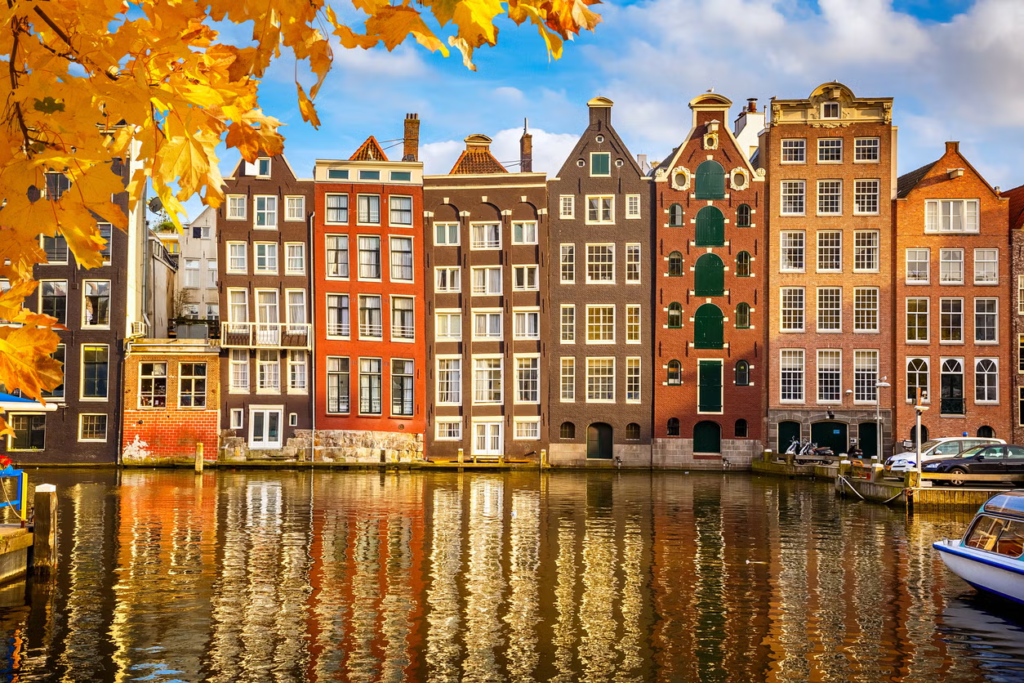
Amsterdam, the capital city, is famous for its picturesque canals, historic buildings, and vibrant culture. Visitors can explore the Rijksmuseum, home to masterpieces by Dutch artists, and the Anne Frank House, which offers a poignant glimpse into the past. The city’s unique neighborhoods, such as Jordaan and De Pijp, are filled with charming cafes, boutiques, and galleries.
2. Keukenhof Gardens
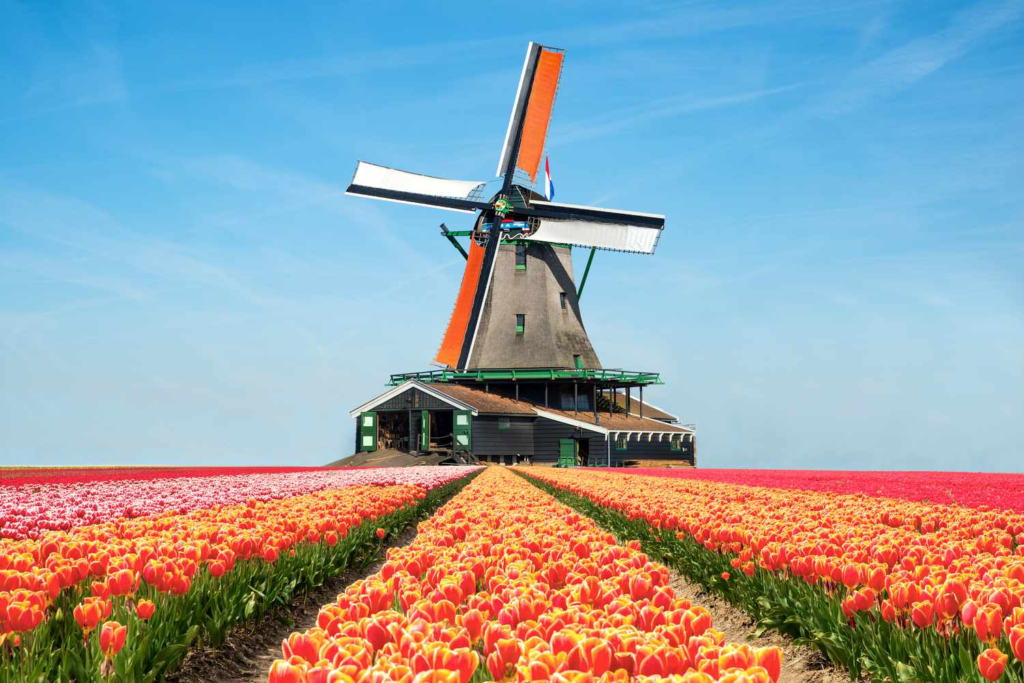
Keukenhof Gardens, located in Lisse, is one of the largest flower gardens in the world, renowned for its stunning tulip displays. Open annually from mid-March to mid-May, the gardens showcase millions of blooming flowers in a breathtaking array of colors and designs. Visitors can stroll through beautifully landscaped gardens and enjoy the fragrant blossoms.
3. Zaanse Schans

Zaanse Schans is an open-air museum near Amsterdam that offers a glimpse into traditional Dutch life. Visitors can explore historic windmills, wooden houses, and artisanal workshops. The area showcases the country’s rich industrial heritage, with demonstrations of traditional crafts such as cheese-making and clog-making.
4. Rotterdam
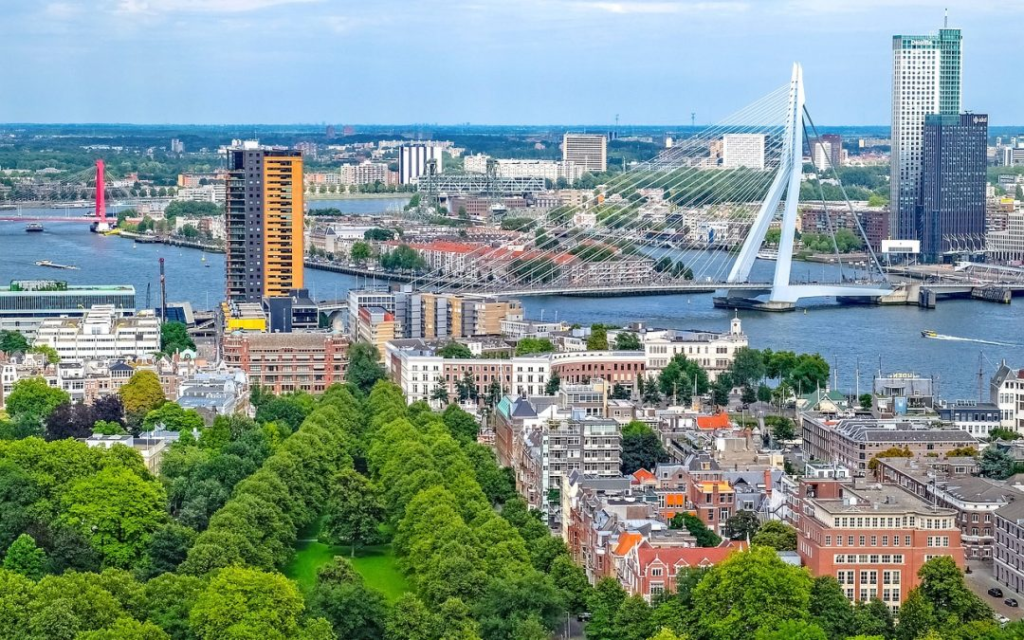
Rotterdam, known for its modern architecture and vibrant cultural scene, is a city that showcases a different side of the Netherlands. The iconic Erasmus Bridge, modern skyscrapers, and innovative museums, such as the Kunsthal, make Rotterdam a must-visit destination. The city is also home to the historic Markthal, an indoor food market offering a wide array of culinary delights.
5. The Hague
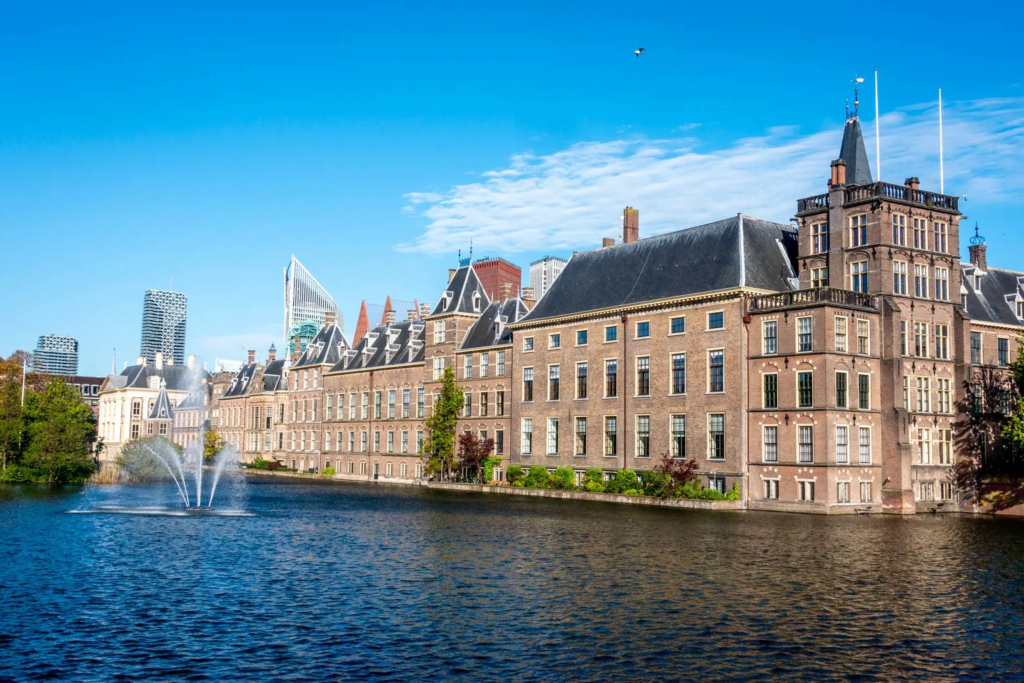
The Hague, the political center of the Netherlands, is home to the Dutch government and the royal family. Visitors can explore the Binnenhof, a historic complex housing the Parliament, and the Peace Palace, which hosts the International Court of Justice. The city’s museums, such as the Mauritshuis, showcase world-class art collections.
6. Giethoorn
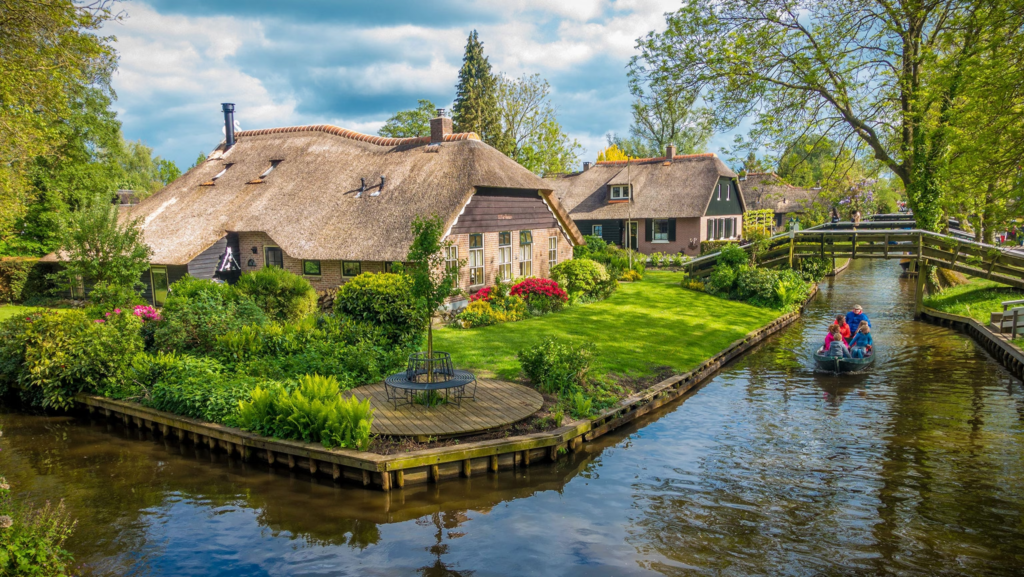
Giethoorn, often referred to as the “Venice of the North,” is a charming village known for its picturesque canals and thatched-roof cottages. Visitors can explore the village by boat, enjoying the serene atmosphere and beautiful landscapes. Giethoorn is a popular destination for those seeking a peaceful retreat in nature.
7. Utrecht

Utrecht, a historic city with a vibrant atmosphere, is known for its medieval architecture and picturesque canals. The Dom Tower, the tallest church tower in the Netherlands, offers panoramic views of the city. Utrecht’s lively cafes and cultural events make it a great place to experience Dutch city life.
8. Delft
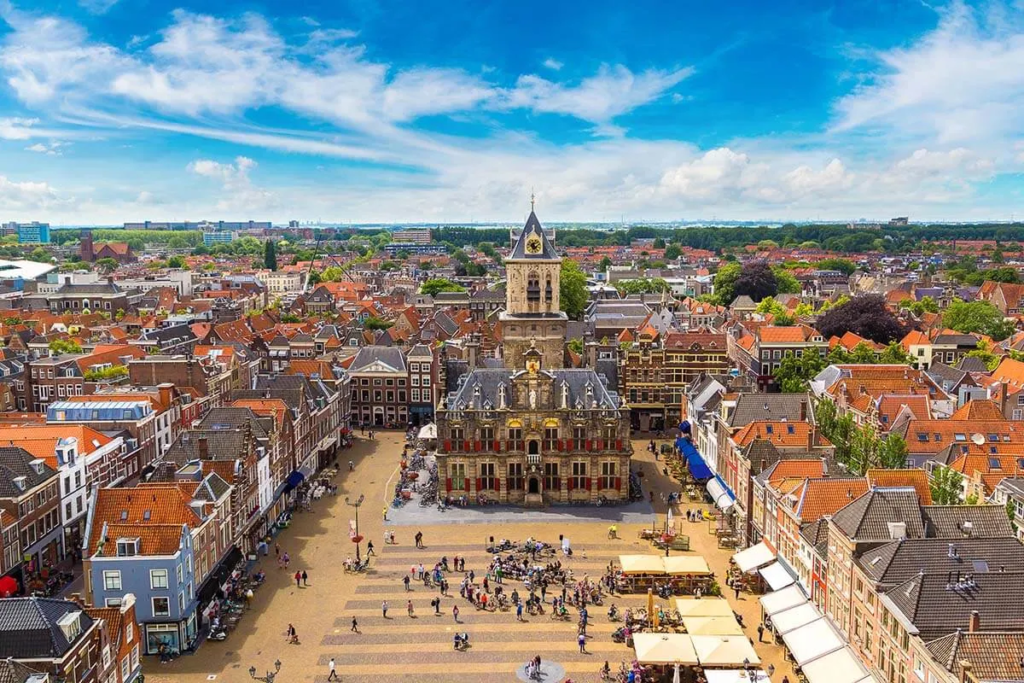
Delft is a charming city famous for its blue-and-white pottery and historic buildings. Visitors can explore the Royal Delft factory, where traditional pottery is made, and wander through the picturesque streets lined with canals. The city is also known for its association with the painter Johannes Vermeer.
9. Haarlem

Haarlem, a picturesque city located just outside Amsterdam, is known for its historic architecture and vibrant cultural scene. The Frans Hals Museum showcases works by the famous painter, while the Grote Kerk, a stunning medieval church, offers insight into the city’s rich history. Haarlem’s charming streets are lined with boutiques, cafes, and galleries.
10. Kinderdijk

Kinderdijk is a UNESCO World Heritage site famous for its iconic windmills, which date back to the 18th century. Visitors can explore the windmills, learn about the traditional Dutch water management system, and enjoy scenic walks along the canals. The picturesque landscape is a quintessential representation of the Netherlands’ cultural heritage.
Culture of the Netherlands
Dutch culture is characterized by its openness, creativity, and rich artistic heritage. The Netherlands has produced renowned artists, thinkers, and philosophers throughout history, contributing to its reputation as a center of culture and innovation. The country celebrates various cultural events and festivals, showcasing its diverse traditions.
The Netherlands is famous for its contributions to the arts, particularly during the Dutch Golden Age when painters like Rembrandt, Vermeer, and Frans Hals gained international acclaim. Museums such as the Rijksmuseum and the Van Gogh Museum in Amsterdam house some of the most significant collections of Dutch art.
Festivals play a vital role in Dutch culture, with events like King’s Day, celebrating the Dutch monarchy, and the Amsterdam Dance Event, a prominent electronic music festival. Traditional Dutch celebrations, such as Sinterklaas and Carnival, reflect the country’s rich folklore and customs.
Cuisine of the Netherlands
Dutch cuisine is hearty and diverse, influenced by the country’s agricultural heritage and maritime traditions. The cuisine features a variety of ingredients, including potatoes, dairy products, and fresh vegetables. Traditional dishes often emphasize simplicity and robust flavors.
One of the most iconic Dutch dishes is “stamppot,” a hearty dish made from mashed potatoes mixed with vegetables such as kale or sauerkraut. Haring, or raw herring fish, is a popular street food, often served with onions and pickles. The Netherlands is also known for its cheese, with varieties like Gouda and Edam being internationally renowned.
Street food culture thrives in the Netherlands, with popular snacks like “patat,” thick-cut fries served with a variety of sauces, and “kroket,” a deep-fried meat croquette. The country’s diverse culinary scene also features international influences, reflecting the multicultural nature of Dutch society.
Top Eight Most Famous Foods
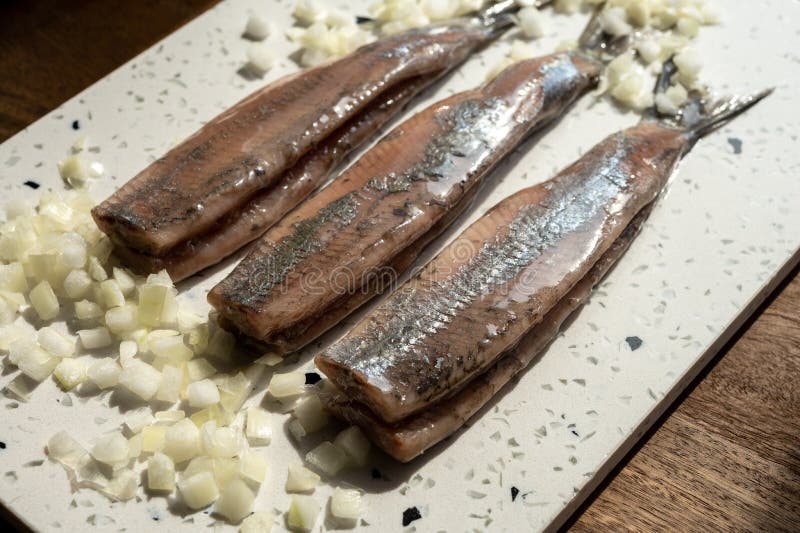




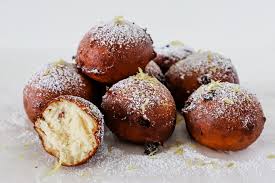
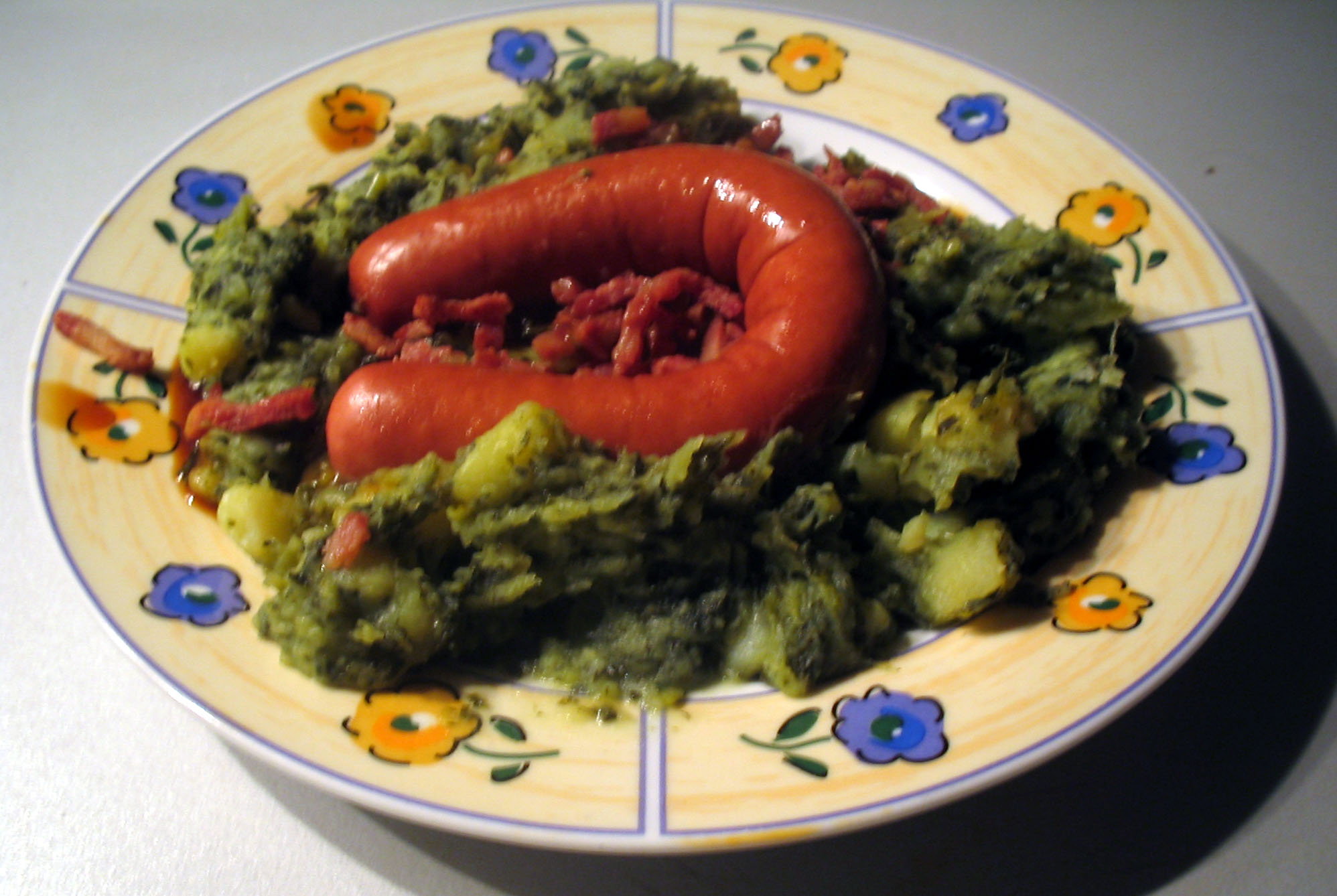

Economy of the Netherlands
The Netherlands boasts a highly developed and competitive economy, characterized by a strong focus on international trade, agriculture, and technology. As one of the world’s leading exporters of goods, the country benefits from a strategic location with access to major European markets. The Port of Rotterdam is one of the busiest ports globally and serves as a key logistical hub for trade.
Agriculture plays a vital role in the Dutch economy, with the Netherlands being one of the largest agricultural exporters in the world. The country’s innovative agricultural practices, including greenhouse farming and precision agriculture, contribute to high yields and sustainable practices.
In recent years, the Netherlands has also emerged as a hub for technology and innovation. The government invests in research and development, fostering a thriving startup ecosystem. Sectors such as information technology, renewable energy, and life sciences are experiencing significant growth, positioning the Netherlands as a leader in technological advancements.
Future Perspectives
The future of the Netherlands appears promising, with several trends shaping the country’s development. The focus on sustainability and climate resilience is paramount, as the country grapples with
the challenges posed by climate change. Investments in renewable energy sources, such as wind and solar power, aim to reduce greenhouse gas emissions and promote sustainable living.
Furthermore, the Netherlands is committed to maintaining its status as a global trade hub. Ongoing infrastructure projects, including the expansion of ports and transportation networks, will enhance connectivity and facilitate international trade. The government’s emphasis on innovation and technology will likely continue to drive economic growth and attract foreign investment.
Socially, the Netherlands is increasingly embracing diversity and inclusivity. The country’s progressive policies promote equal rights and opportunities for all citizens, contributing to a cohesive and harmonious society. Education and research will remain priorities, ensuring that the Netherlands continues to foster talent and creativity for future generations.
Conclusion
The Netherlands is a country rich in history, culture, and natural beauty. From its iconic windmills and tulip fields to its vibrant cities and world-class museums, the Netherlands offers a unique experience for travelers. With its commitment to sustainability, innovation, and inclusivity, the country is poised for a bright future, continuing to inspire and captivate visitors from around the globe.
let’s enjoy few years on earth with peace and happiness….✍🏼🙏

